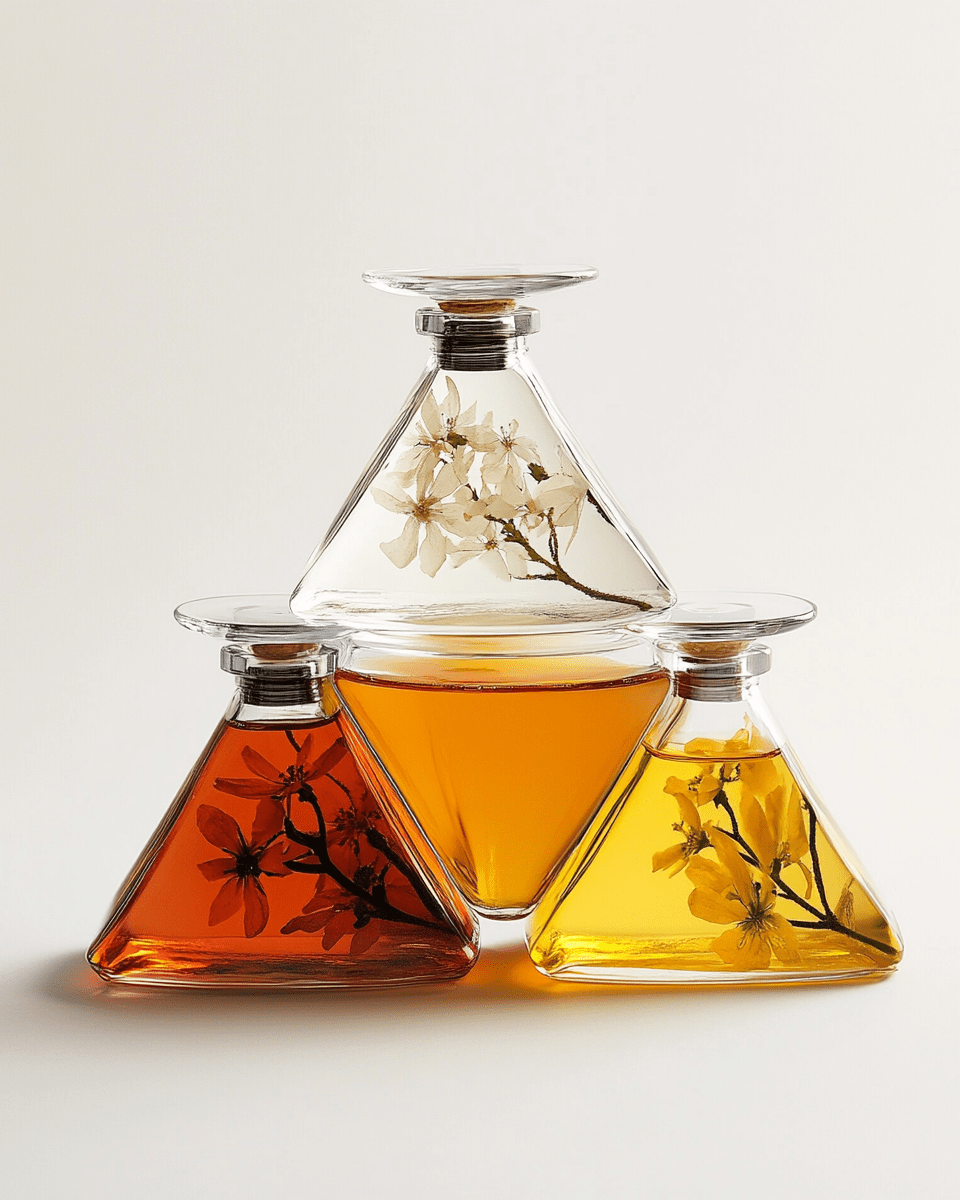
An introduction to fragrance families
Fragrances accompany us throughout our lives. They evoke memories, influence our mood and are often closely linked to our personality. But why does a perfume smell the way it does? The answer lies in the so-called fragrance families - a classification that helps us to better understand perfumes and find our own favourites more easily.
What are fragrance families?
Definition and meaning of fragrance families
A fragrance family describes a group of perfumes with similar olfactory characteristics. This categorisation not only helps perfume manufacturers and perfume retailers, but also consumers to select fragrances in a targeted manner. Whether fresh and sparkling, warming and sensual or woody and elegant - each fragrance family has its own character and influences how a perfume is perceived.
Why fragrance families play an important role in the perfume world
The perfume world is incredibly diverse. Thousands of creations are developed every year across designer, indie and niche houses and without some structure it would be difficult to keep track of them all. Fragrance families make it easier to compare perfumes, help to discover new favourite fragrances and decide what to wear for each season.
Differences in fragrance classifications depending on the source
There are different classification systems. While the French perfume industry distinguishes between seven main fragrance families, other perfume houses work with finer subdivisions. In addition, modern trends are leading to the emergence of new categories that extend classic classifications.
The most important fragrance families and their properties
The traditional categorisation comprises seven main categories (floral, woody, fougére, amber, chypre, fruity and citrus) with new categories emerging in the last years (gourmand, leather, aquatic, & fresh scents):
Floral fragrances: the multifaceted elegance of nature
The floral fragrance family is a truly large family of fragrances with an impressive variety. It ranges from light, fresh compositions with lily of the valley, freesia, lavender or water lily to gently soft floral accords such as osmanthus, mimosa, iris or violet. Opulent, sensual, heavy floral fragrances are also particularly popular, with fascinating notes of jasmine, tuberose, lily, hyacinth, ylang-ylang and narcissus. This fragrance family reflects the entire spectrum of the floral world and can be combined in a variety of ways.
Woody fragrances: timeless depth and warmth
The woody fragrance family has its roots in the ancient civilisations of Egypt and India. Typical ingredients are sandalwood, rosewood, guaiac wood as well as cedar and pine - woods that are known for their warm, calming aura. A particularly precious element of this family is oud (eaglewood), a resinous, fragrant wood that has long been used primarily in Arabian and Asian perfumeries and is now also very popular in Europe. Wood fragrances can be intense, smoky or balsamic and often lend perfumes a noble, long-lasting base.
Fougère fragrances: the classic charm of masculine elegance
The fougère fragrance family owes its name to the Fougère Royale perfume, which was created by the Houbigant fragrance house in 1882. Characteristic components of these compositions are oakmoss, lavender and coumarin, often complemented by bergamot, geranium and spicy notes. Interestingly, ‘fougère’ means ‘fern’ in French - but this is not included in the fragrances. Instead, fougère compositions with their green, woody freshness are reminiscent of cool forests and are therefore often associated with classic men's fragrances or so-called ‘barbershop scents’.
Amber fragrances: the magic of 1001 nights
The warm, sensual fragrances in this family tell olfactory stories full of exoticism. The classic ambery accord - formerly known as ‘oriental’ - is made up of labdanum, vanilla, coumarin and patchouli. Spices such as tonka bean, nutmeg, cinnamon or cardamom as well as balsamic resins enhance the depth of these compositions. Ambergris, a traditionally used fragrance ingredient, is now synthetically reproduced and lends these perfumes an unmistakable warmth. Depending on the creation, floral notes, precious woods or animal elements complement the bouquet
Chypre fragrances: classic elegance with a modern twist
The chypre fragrance family dates back to François Coty's legendary creation Chypre from 1917, which paid homage to the Mediterranean island of Cyprus. Typical elements of this complex fragrance category are bergamot, oakmoss, patchouli and labdanum, which together create a sophisticated, mossy-woody base. Modern chypre fragrances often reinterpret this classic accord by rounding it off with notes of rose, jasmine or musk. While women's chypre fragrances are often elegant and sensual, men's versions are increasingly characterised by leathery and woody accents.
Fruity fragrances: the sweet lightness of nature
The fruity fragrance family is lively, playful and full of natural sweetness. It combines flavours of juicy fruits such as peach, raspberry, pear, apple and cherry, while exotic notes of pineapple, mango or passion fruit add a tropical touch. These fragrances are often combined with floral or woody accords to give them more depth and elegance. Fruity fragrances are usually youthful, dynamic and particularly popular in the warmer months of the year, as they have a fresh, carefree aura.
Citrus fragrances: invigorating freshness and sparkling lightness
The citrus fragrance family inspires with its refreshing, vitalising aura. They are characterised by notes of lemon, bergamot, lime, grapefruit, mandarin and orange, which are extracted from the peel or blossom of the fruit. These fragrances are light, airy and invigorating - perfect for warm days or as a freshness kick in between. Depending on the composition, citrus fragrances can be green, aromatic, floral or even spicy. They are particularly popular in eau de colognes, which are known for their light, summery elegance.
Gourmand fragrances: sweet temptation for the senses
This modern fragrance family seduces with warm, ‘edible’ notes reminiscent of patisserie. Candyfloss, caramel, cocoa, coffee, candied fruit, vanilla and tonka bean are characteristic accords of these often intensely sweet fragrances. The first successful gourmand perfume was Angel by Thierry Mugler in 1992, composed by perfumers Olivier Cresp and Yves de Chirin. Since then, these opulent, often almost ‘delicious’ fragrances have enjoyed steadily growing popularity.
Leather fragrances: the refined art of imitation
The leather fragrance family is one of the most exclusive categories in the world of fragrances. Here, the distinctive aroma of leather takes centre stage - not as a natural essence, however, but as an artfully recreated accord. Perfumers use a combination of synthetic fragrance molecules such as IsoButyl Quinoline as well as notes of musk, resins and woods. These creations can be interpreted in different ways: Ambery accents create the illusion of soft suede, while animalic notes give an intense, dark leather feel. This variability makes the leather fragrance family equally exciting for men and women.
Aquatic fragrances: capturing the freshness of the sea
Aquatic fragrances convey the feeling of a fresh sea breeze, clear mountain lakes or a sudden summer rain. This family of fragrances was made famous by Giorgio Armani's groundbreaking Acqua di Giò fragrance and often uses synthetic molecules such as calone to imitate the salty, ozonic freshness of water. Typical accompanying notes are algae, water lily, citrus fruits and light woods, which give the fragrance a refreshing and invigorating effect. Aquatic fragrances are ideal for summer and give a feeling of lightness and purity.
Fresh fragrances: energy and clarity in liquid form
Fresh fragrances are like an invigorating dip in cool water or a walk through dewy meadows. This fragrance family comprises a variety of compositions, including citrus, green, aromatic and ozonic notes. Elements such as mint, basil, lemongrass or tea leaves provide a natural freshness, while lavender and rosemary often add a spicy nuance. Fresh fragrances are particularly versatile and popular in both summery and sporty creations, as they have a clear, vitalising aura.
Overall, perfume creations are often blends of several fragrance families. A chypre fragrance may contain floral or fruity accents, while an oriental perfume may incorporate fresh notes.



